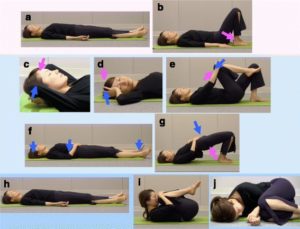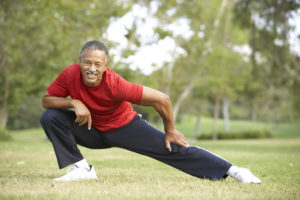Improve Substance Abuse Treatment with Mindfulness
By John M. de Castro, Ph.D.
“It is most often the mind’s interpretation of a stressful life event, not the event itself, that creates the urgent need to get instant relief and leads to substance use or other unwanted behaviors. Mindfulness practices provide a break from stress, teach the client to listen to his/her mind, body, and emotions, and improve the self-acceptance that leads to greater hope and self-efficacy.“ – NAADAC
Substance abuse is a major health and social problem. There are estimated 22.2 million people in the U.S. with substance dependence. It is estimated that worldwide there are nearly ¼ million deaths yearly as a result of illicit drug use which includes unintentional overdoses, suicides, HIV and AIDS, and trauma. Drug abuse is often more complex than a simple addiction to a substance. Addiction frequently is accompanied by other mental health issues, comorbidities. They include mood and anxiety disorders, antisocial and conduct disorder, smoking and alcohol abuse, and post-traumatic stress disorder (PTSD).
There are a number of programs that are successful at stopping the drug abuse, including the classic 12-step program emblematic of Alcoholics Anonymous. Unfortunately, the majority of drug and/or alcohol abusers relapse and return to substance abuse, possibility because of the failure to address comorbidities. Hence, it is important to find an effective method to treat both addiction but also accompanying conditions. Mindfulness training has been shown to be a safe and effective treatment of addiction and relapse prevention. It has also been shown to be effective for a variety of other mental health issues including anxiety, depression, antisocial and conduct disorder, smoking and alcohol abuse, and post-traumatic stress disorder (PTSD). Hence, mindfulness training would appear to be a potential treatment that can be added to traditional substance abuse treatment programs to both address addiction and accompanying comorbid disorders.
In today’s Research News article “Mindfulness-Oriented Recovery Enhancement Versus CBT for Co-Occurring Substance Dependence, Traumatic Stress, and Psychiatric Disorders: Proximal Outcomes from a Pragmatic Randomized Trial.” See summary below or view the full text of the study at: https://www.ncbi.nlm.nih.gov/pmc/articles/PMC4752876/
Garland and colleagues compared the effectiveness of a mindfulness-based addiction treatment program with another well-established therapy, cognitive behavioral therapy (CBT), and with the usual treatment for addiction. They recruited homeless men with a substance abuse disorder and comorbid mental health issues and randomly assigned them to either receive 10 weeks of a group-based Mindfulness-Oriented Recovery Enhancement (MORE) program, group-based cognitive behavioral therapy (CBT), or usual treatment. At the beginning and end of the 10-week treatment, they measured the participants’ trauma history, drug cravings, post-traumatic stress symptoms, psychiatric distress, mindfulness, positive and negative feelings, and readiness to change.
They found that all treatments improved depression, but Mindfulness-Oriented Recovery Enhancement (MORE) treatment produced improvements in drug cravings, post-traumatic stress symptoms, mindfulness, and negative feelings, that were significantly greater than cognitive behavioral therapy (CBT), or usual treatment. In addition, mediation analysis revealed that the improvements in drug cravings and post-traumatic stress symptoms was mediated by increases in mindfulness. That is the Mindfulness-Oriented Recovery Enhancement (MORE) treatment significantly improved mindfulness which, in turn, produced significant improvements in drug cravings and post-traumatic stress symptoms.
These are particularly compelling findings as MORE was found to be superior to a well-established treatment technique, cognitive behavioral therapy (CBT). This is a powerful research design that controls for most sources of confounding. So, it appears clear that adding mindfulness practice to addiction treatment significantly improves outcomes.
So, improve substance abuse treatment with mindfulness.
“mindfulness enhances our ability to be non-reactive. This is key in drug treatment because oftentimes we seek immediate gratification; we want to feel good right now, or we want the negative feeling we’re experiencing to stop right now. This leads to reactive thinking, feeling, and behaving, and can be a catapult for drug use. When we practice mindfulness we practice responding to our experience with a non-reactive, non-judgmental attitude. This helps us maintain autonomy over our behavior. We may not have control over whether a craving for a drug arises, but we can control how we respond to such a craving. The irony is that when we practice simply observing the craving; letting it arise and letting it pass away (rather than actively trying to push it away or avoid it), we are left with more of an ability to regulate ourselves.´- Center for Adolescent Studies
CMCS – Center for Mindfulness and Contemplative Studies
This and other Contemplative Studies posts are also available on Google+ https://plus.google.com/106784388191201299496/posts and on Twitter @MindfulResearch
Study Summary
Garland, E. L., Roberts-Lewis, A., Tronnier, C. D., Graves, R., & Kelley, K. (2016). Mindfulness-Oriented Recovery Enhancement Versus CBT for Co-Occurring Substance Dependence, Traumatic Stress, and Psychiatric Disorders: Proximal Outcomes from a Pragmatic Randomized Trial. Behaviour Research and Therapy, 77, 7–16. http://doi.org/10.1016/j.brat.2015.11.012
Abstract
In clinical settings, there is a high comorbidity between substance use disorders, psychiatric disorders, and traumatic stress. As such, transdiagnostic therapies are needed to address these co-occurring issues efficiently. The aim of the present study was to conduct a pragmatic randomized controlled trial comparing Mindfulness-Oriented Recovery Enhancement (MORE) to group Cognitive-Behavioral Therapy (CBT) and treatment-as-usual (TAU) for previously homeless men residing in a therapeutic community. Men with co-occurring substance use and psychiatric disorders, as well as extensive trauma histories, were randomly assigned to 10 weeks of group treatment with MORE (n=64), CBT (n=64), or TAU (n=52). Study findings indicated that from pre- to post-treatment MORE was associated with modest yet significantly greater improvements in substance craving, post-traumatic stress, and negative affect than CBT, and significantly greater improvements in post-traumatic stress and positive affect than TAU. A significant indirect effect of MORE on decreasing craving and post-traumatic stress by increasing dispositional mindfulness was observed, suggesting that MORE may target these issues via enhancing mindful awareness in everyday life. This pragmatic trial represents the first head-to-head comparison of MORE against an empirically-supported treatment for co-occurring disorders. Results suggest that MORE, as an integrative therapy designed to bolster self-regulatory capacity, may hold promise as a treatment for intersecting clinical conditions.
https://www.ncbi.nlm.nih.gov/pmc/articles/PMC4752876/









